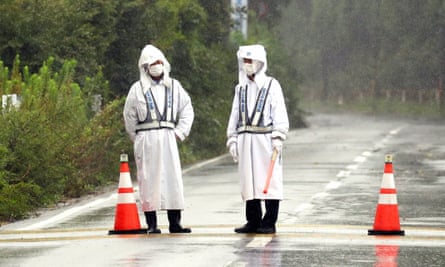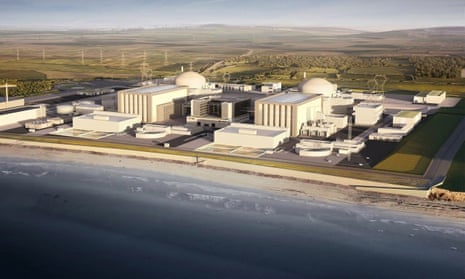Yes, I still believe that nuclear power can make a useful contribution to low-carbon energy. No, I do not believe that the new plant the government has just approved at Hinkley Point is part of that useful contribution. Far from it: this preposterous white elephant could scarcely be better designed to persuade people that nuclear energy is an expensive and dangerous distraction from the decisions we have to make.
Let’s start where all such discussions should start: at the most important place. The overwhelming priority for those who make decisions about energy must be to avert climate breakdown. They need to keep the lights on, but not by sacrificing the future welfare of humanity and Earth’s living systems. It is better to light a candle than to curse the darkness. It is also better to curse the darkness than to burn your house down.
Nuclear power, whatever its detractors might claim, is a low-carbon energy source, roughly comparable to renewables in terms of total emissions. To shut down viable nuclear capacity in the midst of a climate change emergency (now, in other words), as Germany and Japan have done, is a refined form of madness, especially when at least some of that capacity is likely to be replaced by gas or coal, whose carbon emissions are much higher. Replacing fossil fuels with renewables, on the timescale in which we need to act, is hard enough, without setting yourself the additional, unnecessary challenge of also replacing nuclear power.

Atomic energy is far less dangerous to human beings and the living world than fossil fuels. The dangers of radioactive discharge and nuclear accidents have been systematically exaggerated by campaigners. As a result, the dangers of fossil fuel burning have been implicitly downgraded.
Remember that even the Fukushima disaster, a level 7 nuclear accident (the highest category), caused by a massive earthquake and tidal wave hitting an antiquated reactor, has so far killed no one as a result of radioactive discharge, and is unlikely to do so in the future. Fossil fuel burning, by contrast, kills hundreds of thousands of people every year through air pollution, and presents a possibly existential threat to civilisation through climate change.
But keeping viable plants open and replacing a superannuated nuclear fleet with new plants are slightly different decisions. In the latter case, governments have to decide two things: whether nuclear power is the best means of replacing the low-carbon energy the old plants were producing and, if so, which nuclear technology should best be adopted.
It’s not just that Theresa May’s government has taken the wrong decision – it does not appear to have made a decision at all. It has simply adopted the proposal on the table, without subjecting it to a serious comparison with the alternatives.
There are several problems with the Hinkley C proposal but the most immediate is this: it could be unbuildable. We all know by now of the delays, debacles and disasters that have beset attempts to construct the only two plants of the same kind, at Olkiluoto in Finland and Flamanville in Normandy. The evidence suggests that these are not just bad luck but an inherent outcome of the fabulously complex design. As Tony Roulstone, who runs the masters programme in nuclear engineering at Cambridge, has argued, the plan for Hinkley C is like “building a cathedral within a cathedral”.
If this is true, not only will Hinkley C leave us with a gigantic bill and nothing to show for it, it will also have stymied – through the misallocation of both financial and political resources – other contributions to the low-carbon economy, in the form of renewable power and energy-saving technologies, which could be deployed immediately with minimal risk of failure. In other words, it is likely to cause energy blight.
And it presents a longer-term risk to rational energy policy. The government currently has no idea what to do about the UK’s massive legacy of nuclear waste. Neither of the primary proposed solutions – burial and mixed oxide processing (another expensive fiasco) – are politically acceptable.
But there are several potential technologies that raise the possibility of addressing three problems at once: safely disposing of nuclear waste; meeting the country’s energy needs at low cost; and replacing high-carbon electricity with a very low-carbon source. I’m talking about small modular reactors that use nuclear waste as fuel.
The late Professor David MacKay, the brilliant and exuberant chief scientist at the previous government’s climate change department, endorsed an estimate suggesting that one of these potential technologies, the integral fast reactor, could supply all the UK’s energy needs for 500 years by consuming the nuclear waste stockpile.
I suspect that May’s unintelligible decision to build the new plant at Hinkley will kill nuclear power in Britain, including technologies far more promising than the proven formula for chaos she has just chosen.
You might welcome that prospect. If so, you should ask yourself what else should be done about our mountain of nuclear waste.

